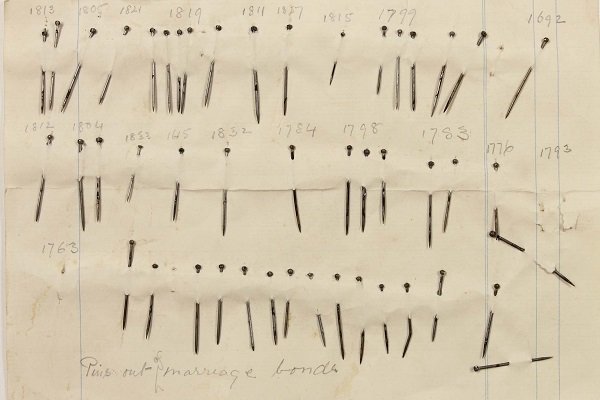
Before the word processor, before White-Out, before Post-It Notes, there were straight pins. Or, at least that’s what Jane Austen used to make edits in one of her rare manuscripts. In 2011, Oxford’s Bodleian Library acquired the manuscript of Austen’s abandoned novel, The Watsons. In announcing the acquisition, the Bodleian wrote:
The Watsons is Jane Austen’s first extant draft of a novel in process of development and one of the earliest examples of an English novel to survive in its formative state. Only seven manuscripts of fiction by Austen are known to survive. The Watsons manuscript is extensively revised and corrected throughout, with crossings out and interlinear additions.
Janeausten.ac.uk (the website where Austen’s manuscripts have been digitized) takes a deeper dive into the curious quality of The Watsons manuscript, noting:
The manuscript is written and corrected throughout in brown iron-gall ink. The pages are filled in a neat, even hand with signs of concurrent writing, erasure, and revision, interrupted by occasional passages of heavy interlinear correction.… The manuscript is without chapter divisions, though not without informal division by wider spacing and ruled lines. The full pages suggest that Jane Austen did not anticipate a protracted process of redrafting. With no calculated blank spaces and no obvious way of incorporating large revision or expansion she had to find other strategies – the three patches, small pieces of paper, each of which was filled closely and neatly with the new material, attached with straight pins to the precise spot where erased material was to be covered or where an insertion was required to expand the text.
According to Christopher Fletcher, Keeper of Special Collections at the Bodleian Library, this prickly method of editing wasn’t exactly new. Archivists at the library can trace pins being used as editing tools back to 1617.
You can find The Watsons online here:
- The Watsons, Morgan Library & Museum, New York — Facsimile
- The Watsons, Bodleian Library, Oxford — Facsimile
Note: An earlier version of this post appeared on our site in August, 2014.
If you would like to sign up for Open Culture’s free email newsletter, please find it here. It’s a great way to see our new posts, all bundled in one email, each day.
If you would like to support the mission of Open Culture, consider making a donation to our site. It’s hard to rely 100% on ads, and your contributions will help us continue providing the best free cultural and educational materials to learners everywhere. You can contribute through PayPal, Patreon, and Venmo (@openculture). Thanks!
Related Content:
How Jane Austen Changed Fiction Forever
Take a Virtual Tour of Jane Austen’s Library
Jane Austen’s Music Collection, Now Digitized and Available Online


Wite-Out NOT White-Out